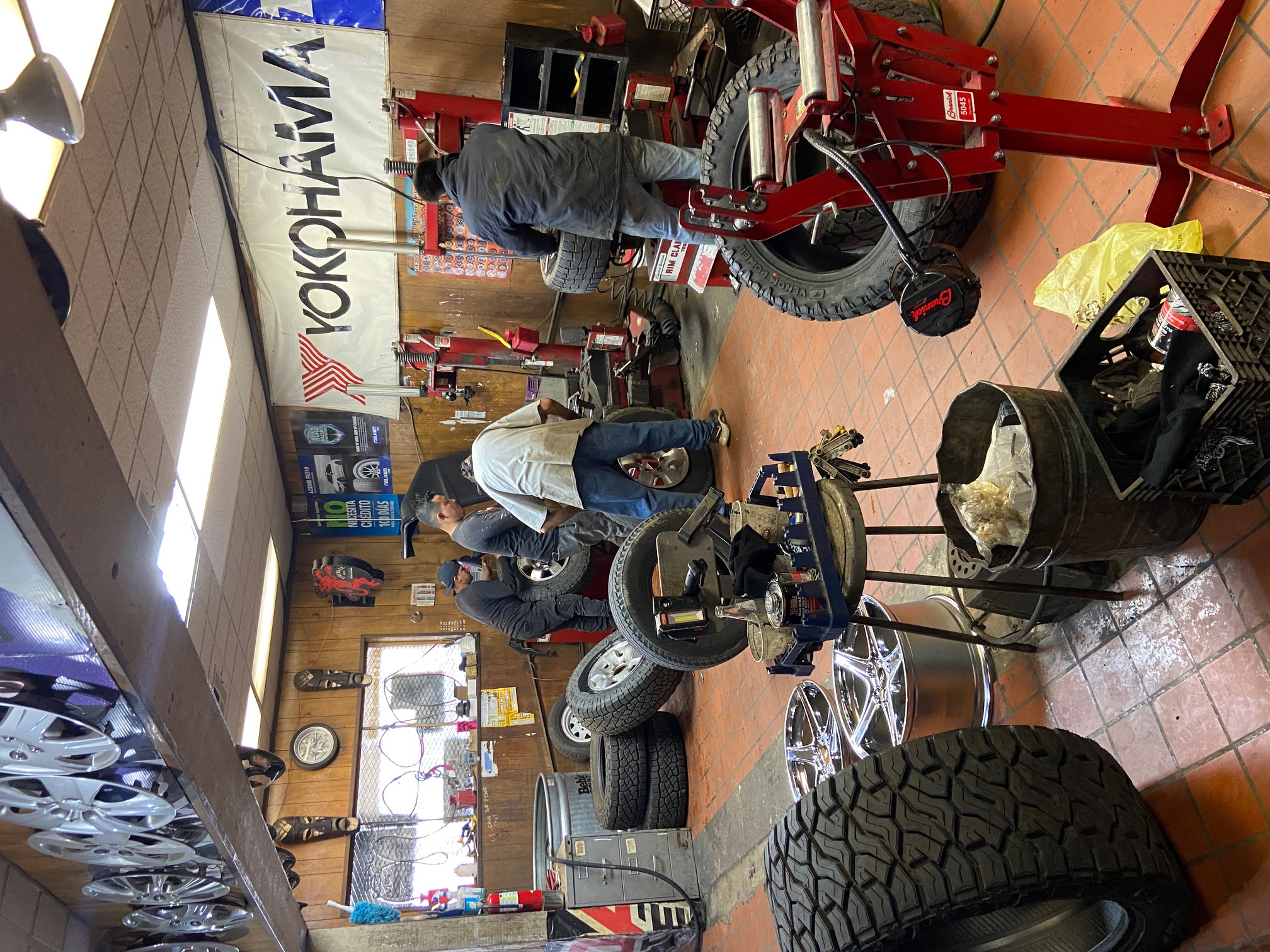The Ultimate Guide to Tire Rotation
Welcome to our comprehensive guide on tire rotation, where we delve into everything you need to know to keep your vehicle running smoothly and safely. We'll explore the significance of tire rotation in maximizing traction and extending the lifespan of your tires, ensuring you get the most out of your investment.
Whether you're wondering when it's time to rotate your tires, how to do it yourself with ease, or what to expect from professional services, we've got you covered. Stay tuned as we break down the different rotation patterns and provide you with practical tips for maintaining optimal tire performance. Get ready to hit the road with confidence and knowledge on how to care for your tires effectively

The Importance of Tire Rotation: Maximizing Traction and Longevity
Tire rotation plays a crucial role in maximizing traction and longevity for your vehicle's tires. By regularly rotating your tires, you can ensure that they wear down evenly, which not only improves your vehicle's performance but also extends the lifespan of your tires. Uneven tire wear is a common issue that can arise when tires are not rotated regularly.
Maximizing Traction:
Proper tire rotation helps distribute the wear more evenly across all four tires, which in turn enhances traction on the road. When tires wear down unevenly, it can lead to reduced grip and stability, especially in adverse road conditions such as wet or snowy weather. By maintaining optimal tread depth and even wear patterns through rotation, you can improve the overall traction of your tires, ensuring a safer driving experience.
Maximizing Longevity:
In addition to enhancing traction, tire rotation is essential for extending the lifespan of your tires. Since each tire performs different functions on your vehicle, they are subjected to varying levels of wear. Front tires typically wear out faster than rear tires due to steering and the weight of the engine. By rotating your tires at recommended intervals, you can balance out this wear and prevent premature tire replacement. This not only saves you money in the long run but also ensures that your tires perform optimally for an extended period.
Overall, tire rotation is a simple yet effective maintenance practice that can significantly impact the performance and durability of your tires. By incorporating regular tire rotations into your vehicle maintenance routine, you can maximize traction, improve safety on the road, and prolong the life of your tires
When to Rotate Your Tires: Mileage Milestones and Warning Signs
Tire rotation is a crucial aspect of routine car maintenance that often gets overlooked. Knowing when to rotate your tires can extend their lifespan and improve your vehicle's overall performance. By understanding the mileage milestones and warning signs associated with tire rotation, you can ensure that your tires wear evenly, enhancing safety and efficiency on the road.
**Mileage Milestones:**
It is generally recommended to rotate your tires every 5,000 to 7,500 miles, or as advised in your vehicle's owner's manual. Regular rotation helps distribute wear evenly across all four tires, extending their longevity. By following these mileage milestones, you can prevent uneven wear patterns that may lead to premature tire replacement.
**Warning Signs:**
In addition to regular rotations based on mileage, paying attention to warning signs can also indicate when it's time to rotate your tires. Uneven tire wear, vibrations while driving, and increased road noise are common indicators that your tires may need rotation. If you notice any of these signs, it's essential to schedule a tire rotation promptly to maintain optimal performance and safety.
Neglecting to rotate your tires at the recommended mileage milestones or ignoring warning signs can result in uneven wear, decreased traction, and compromised handling. By staying proactive and scheduling regular tire rotations based on mileage and warning signs, you can prolong the life of your tires and ensure a smoother driving experience
DIY Tire Rotation: Step-by-Step Guide for a Smooth Process
Tire rotation is a crucial aspect of routine vehicle maintenance that often gets overlooked. By rotating your tires regularly, you can ensure even wear, extend the lifespan of your tires, improve fuel efficiency, and maintain optimal performance on the road. While it may seem like a daunting task, performing a DIY tire rotation is a straightforward process that can save you time and money in the long run.
To begin the tire rotation process, you will need a few tools such as a jack, jack stands, a lug wrench, and a torque wrench. Before you start, make sure your vehicle is parked on a flat surface and engage the parking brake for safety.
Start by loosening the lug nuts on all four wheels, but do not remove them completely just yet. Jack up your vehicle using the jack and secure it with jack stands for added safety. Once the vehicle is lifted, remove the lug nuts and then take off each tire.
Next, determine the pattern in which you will rotate your tires. The most common rotation pattern is the "cross rotation" method, where the front tires move straight back to the rear and the rear tires crisscross to the front. However, some vehicles may have specific rotation patterns based on factors like tire wear and drivetrain type, so be sure to consult your owner's manual for guidance.
After you have rotated the tires according to the designated pattern, securely tighten the lug nuts in a star pattern to ensure even pressure distribution. Lower your vehicle using the jack and re-torque the lug nuts to the manufacturer's specifications using a torque wrench.
Finally, do a quick visual inspection of all tires to make sure they are properly aligned and inflated to the recommended pressure. Repeat this process every 5,000 to 8,000 miles or as recommended by your vehicle's manufacturer to maintain optimal tire performance and safety.
By following these simple steps for a DIY tire rotation, you can keep your tires in top condition, improve your vehicle's handling, and save money in the long term. So, don't overlook the importance of tire rotation in your regular maintenance routine for a smoother and safer driving experience

Professional Tire Rotation Services: What to Expect and When to Schedule
Tire rotation is a crucial aspect of vehicle maintenance that often gets overlooked. By regularly rotating your vehicle's tires, you can ensure even wear on all four tires, which can extend their lifespan and improve your vehicle's overall performance. Professional tire rotation services provide a convenient and effective way to keep your tires in optimal condition.
When you schedule a professional tire rotation service, you can expect a thorough inspection of your tires to assess their current condition. The service technician will then rotate the tires according to the manufacturer's recommendations, taking into account factors such as tread wear patterns and your driving habits.
By following the recommended tire rotation schedule, typically every 6,000 to 8,000 miles, you can prevent uneven wear and prolong the life of your tires. Neglecting to rotate your tires regularly can lead to issues such as uneven tire wear, decreased traction, and poor handling, which can compromise your safety on the road.
In conclusion, professional tire rotation services are essential for maintaining your vehicle's safety and performance. By understanding what to expect during a tire rotation service and when to schedule it, you can ensure that your tires remain in top condition and get the most out of your investment in quality tires
Tire Rotation Patterns: Understanding the Cross, Front-to-Rear, and Side-to-Side Rotation Methods
Tire rotation is a crucial aspect of regular vehicle maintenance that often gets overlooked, but it can significantly extend the lifespan of your tires and improve your car's overall performance. Understanding the different tire rotation patterns is essential in ensuring even wear and maximizing the longevity of your tires. There are three primary rotation methods: cross rotation, front-to-rear rotation, and side-to-side rotation.
Cross Rotation: This method involves moving the front tires to the opposite sides of the rear axle, while the rear tires move straight forward to the front axle. Cross rotation helps promote even tread wear and can be particularly beneficial for vehicles with different tire sizes on the front and rear axles.
Front-to-Rear Rotation: In this rotation pattern, the front tires are moved straight back to the rear axle, while the rear tires move straight forward to the front axle. Front-to-rear rotation is a simple and effective method that can help equalize wear between front and rear tires, especially on vehicles with the same tire size on all four wheels.
Side-to-Side Rotation: This method involves swapping the tires on one side of the vehicle with the tires on the other side. Side-to-side rotation can help address uneven wear caused by factors like alignment issues or driving conditions that affect specific sides of the vehicle differently.
By understanding and implementing these tire rotation patterns at the recommended intervals, typically every 6,000 to 8,000 miles or as specified by your vehicle manufacturer, you can ensure that your tires wear evenly, maintain proper traction, and contribute to a smoother and safer driving experience. Regular tire rotation not only extends the life of your tires but also improves fuel efficiency and enhances overall vehicle handling and performance.
Remember, proper tire maintenance, including regular rotation, alignment checks, and tire pressure monitoring, is key to maximizing the safety and longevity of your tires. By incorporating these practices into your routine vehicle care, you can enjoy a smoother ride, better fuel economy, and peace of mind knowing that your tires are in top condition
Conclusion
In conclusion, understanding the importance of tire rotation is crucial in maximizing traction and getting the most out of your tire investment. By regularly rotating your tires, you can ensure even wear, extended lifespan, and overall better performance. Whether you choose to rotate your tires at home or opt for professional services, following the recommended rotation patterns and maintenance tips will help keep your vehicle running smoothly and safely. Remember, staying proactive with tire care, including regular rotation, will not only save you money in the long run but also provide you with a comfortable and secure driving experience. Hit the road with confidence knowing that you are equipped with the knowledge and tools to maintain optimal tire performance through proper tire rotation practices